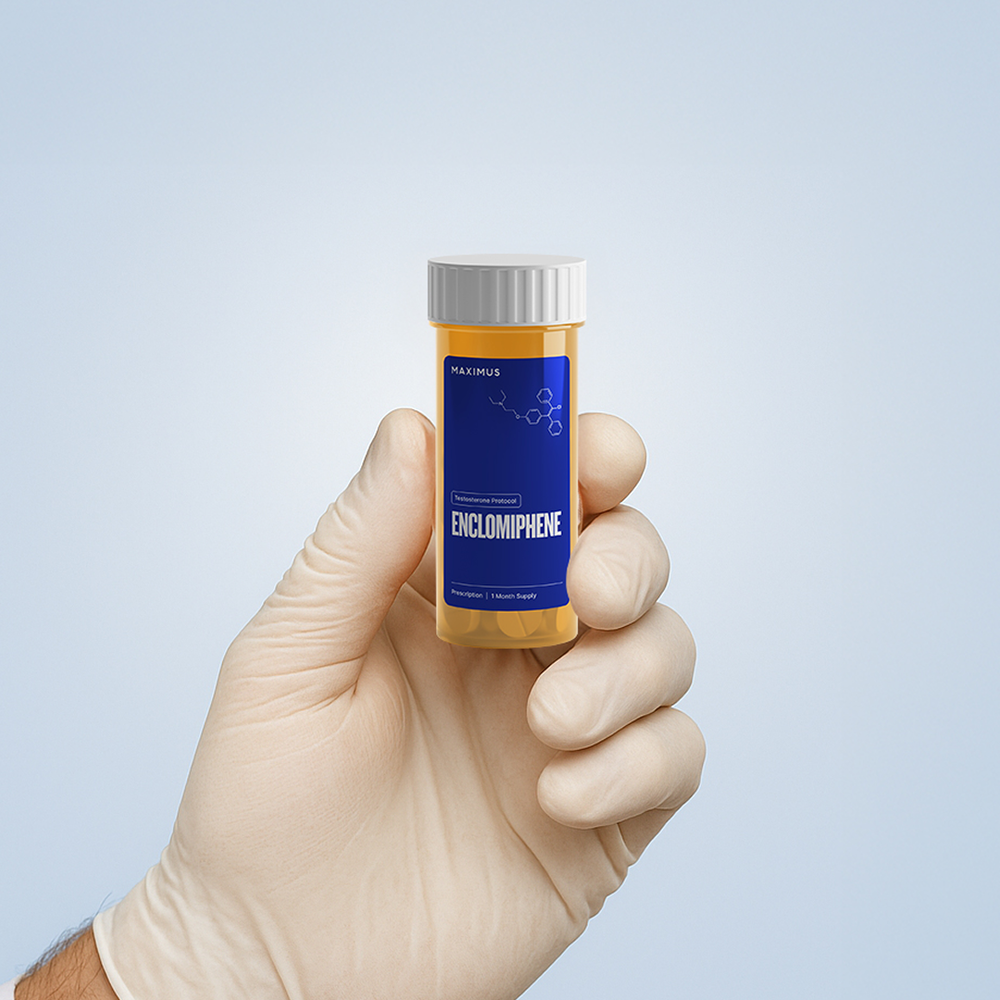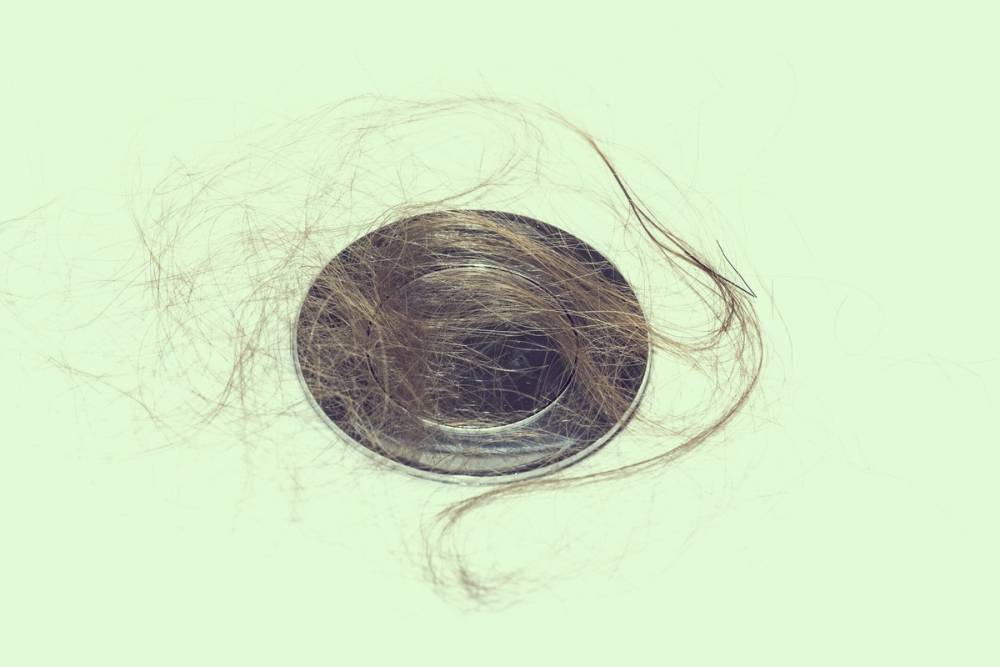Key Takeaways
- Topical minoxidil is approved by the Food and Drug Administration (FDA) to treat male male hair loss. Oral minoxidil is also FDA approved to treat high blood pressure.
- There can be side effects when using topical minoxidil, such as irritation, a slight burning sensation, or an itchy scalp.
- Topical minoxidil is effective at improving hair growth in men, especially after several months of regular use or when combined with other ingredients.
Does your disappearing hairline make you desperate for an effective solution? Fortunately, there are hair regrowth treatments that are available to you.
One popular option is minoxidil, which you’ve likely heard of before if you're serious about regaining your hair.
But if you’re still on the fence about minoxidil, take a look at the benefits, side effects, and more information on this drug below.
What is minoxidil?
Minoxidil is a vasodilator, which means it widens blood vessels improving blood flow to hair follicles. This enhanced blood flow brings more nutrients and oxygen to the follicles, extending the anagen (growth) phase of the hair cycle and stimulating dormant follicles to produce new hair, resulting in thicker and denser hair.
Minoxidil is a potent compound available in both oral and topical forms. Both forms are effective for increasing terminal hair density, but oral minoxidil’s benefits come with easier compliance. Topical minoxidil localizes hair growth benefits, whereas oral minoxidil can lead to systemic effects.
Oral minoxidil vs. topical minoxidil
There are two types of minoxidil available: topical and oral. And they’re generally used for different purposes.
Topical minoxidil is available as either a liquid solution or topical foam in 2% or 5% concentrations.
This is the only version that is FDA-approved to treat androgenetic alopecia, more commonly known as male pattern baldness, but off-label topical minoxidil for hair loss is also available.
Topical minoxidil provides a more targeted solution to hair loss allowing you to focus on specific areas that need growth.
Topical minoxidil may also be used off-label to treat other types of hair loss, including:
- Alopecia areata, an autoimmune disease
- Chemotherapy-induced hair loss
- Hair loss caused by stress
Oral minoxidil, on the other hand, is only FDA-approved to treat high blood pressure. But it may be prescribed off-label at a low dosage for hair loss.
Oral minoxidil offers a more generalized approach to hair loss compared to topical minoxidil making it a great solution for advanced cases of hair loss.
How does minoxidil work?
The exact way minoxidil stimulates hair growth isn’t very well understood. But researchers believe minoxidil works in two ways:
- Dilating blood vessels and stimulating blood flow to the scalp, bringing more nutrients and oxygen to the hair follicles.
- Shortening the resting phase of hair growth and moving hair follicles into the active growth state for a longer period of time, allowing for more hair growth.
But how does minoxidil extend hair’s growth phase?
What actually happens is a scalp enzyme called sulfotransferase Into the active form of minoxidil sulfate. Minoxidil sulfate then shortens the telogen, or resting, phase of the hair, letting the hair enter the growing or anagen stage.
Is minoxidil effective?
The short answer is yes. Results from multiple studies have found that topical minoxidil slows down or reverses hair loss.
In a 2004 observational study involving nearly 1,000 men who applied 5% topical minoxidil twice a day, 84% of the men said the medication was effective for hair regrowth.
Results from other studies show the supposed increased blood flow from 5% minoxidil results in higher hair density.
Deciding between a minoxidil solution or a minoxidil foam can come down to personal preference. One benefit of minoxidil foam over topical solution may be convenience: the foam version allows for increased delivery to the scalp and faster drying time.
One study found that combining topical minoxidil with a process called microneedling — a minimally invasive skin treatment that uses tiny needles — resulted in slightly more hair growth than if someone used topical minoxidil alone.
When comparing oral minoxidil vs. topical minoxidil, a 2023 study found the 5% topical solution worked a little better than a 1 mg daily oral minoxidil dose. Though the researchers noted that the difference between the two treatments wasn’t significant and that 1mg oral minoxidil may be equally effective as topical minoxidil.
Some studies however have explored using a dose of oral minoxidil lower than 5 mg to treat hair loss without the side effects of topical minoxidil.
Simply put, minoxidil is effective for many men looking to regrow thinning hair.
Minoxidil side effects
There can be quite a few benefits of using minoxidil properly, with the main one being hair regrowth. But there can also be side effects of minoxidil use, as with most medications. While these side effects are usually minimal, they’re still possible:
- Skin irritation at the application site
- Scalp itchiness or flaking
- Slight burning sensation
While rare, more serious side effects from minoxidil are also possible. You should contact a doctor if you experience any of the following while using minoxidil:
- Weight gain
- Rapid heartbeat
- Swelling of the face, ankles, hands, or stomach
- Trouble breathing
- Chest pain
- Feeling lightheaded
When taking oral minoxidil, there are some additional side effects you might experience, whether you’re taking it for hair loss or high blood pressure. These include:
- Excessive body hair growth (hypertrichosis)
- Fast heart rate
- Dizziness
- Hair shedding
- Headaches
- Heart issues
- Acne
Does minoxidil work with other ingredients?
If you’re looking to speed up the results of minoxidil, you might be curious whether it can be combined with other medications.
While topical minoxidil doesn’t seem to interact with other drugs, you should let your healthcare provider know about any other medications or supplements you’re taking beforehand.
Combination treatment solutions can be effective — depending on the type of hair loss you may be experiencing, its severity, your health history, and other factors.
For example, research shows that minoxidil works even better for treating male pattern baldness when combined with finasteride, the other FDA-approved hair regrowth medication.
Another ingredient that may improve hair loss when combined with minoxidil? Tretinoin.
While there isn’t concrete evidence that tretinoin plus minoxidil is an effective hair loss treatment, early research is promising.
A 2007 clinical trial that compared a once-a-day combined solution of 5% topical minoxidil and tretinoin to a twice-daily application of 5% topical minoxidil alone found that both treatments resulted in hair growth and were equally effective.
This makes tretinoin combined with minoxidil incredibly convenient as the boost tretinoin provides ensures you only have to apply once per day, rather than than twice.
The bottom line on minoxidil
If you’re starting to notice signs of hair loss and want to do something about it, minoxidil is one treatment option.
While minoxidil is generally well tolerated, there is a slight risk of side effects. But most side effects are mild and easily manageable with the right hair loss guidance.
Minoxidil is often effective in treating hair loss, with many men seeing regrowth, especially when the medication is combined with finasteride, another FDA-approved treatment for male pattern baldness.
Disclaimer: The contents of this article, including, but not limited to, text, graphics, images, and other information, is for information purposes only and does not constitute medical advice. The information contained herein is not a substitute for and should never be relied upon for professional medical advice. The content is not meant to be complete or exhaustive or to be applicable to any specific individual's medical condition. You should consult a licensed healthcare professional before starting any health protocol and seek the advice of your physician or other medical professional if you have questions or concerns about a medical condition. Always talk to your doctor about the risks and benefits of any treatment. Never disregard or delay seeking professional medical advice or treatment because of something you have read on this site. Maximus does not recommend, endorse, or make any representation about the efficacy, appropriateness, or suitability of any specific test, products, procedures, treatments, services, opinions, healthcare providers or other information contained herein. Maximus is not responsible for, nor will they bear any liability for, the content provided herein or any actions or outcomes resulting from or related to its use.
References:
- Chen L, et al. (2019). The Efficacy and Safety of Finasteride Combined with Topical Minoxidil for Androgenetic Alopecia: A Systematic Review and Meta-analysis. https://cdn.mednet.co.il/2012/05/the-efficacy-and-safety-of-finasterideminoxidil.pdf
- Generic Drugs: Questions & Answers. (2021, March 16). FDA. https://www.fda.gov/drugs/frequently-asked-questions-popular-topics/generic-drugs-questions-answers
- Hoover E, Alhajj M, Flores JL. Physiology, Hair. [Updated 2023 Jul 30]. In: StatPearls [Internet]. Treasure Island (FL): StatPearls Publishing; 2024 Jan-. https://www.ncbi.nlm.nih.gov/books/NBK499948/
- Kumar, M. K., Inamadar, A. C., & Palit, A. (2018). A Randomized Controlled, Single-Observer Blinded Study to Determine the Efficacy of Topical Minoxidil plus Microneedling versus Topical Minoxidil Alone in the Treatment of Androgenetic Alopecia. Journal of cutaneous and aesthetic surgery, 11(4), 211–216. https://pmc.ncbi.nlm.nih.gov/articles/PMC6371730/
- Minoxidil Topical. (2017, November 15). MedlinePlus. https://medlineplus.gov/druginfo/meds/a689003.html
- do Nascimento, I. J. B., Harries, M., Rocha, V. B., Thompson, J. Y., Wong, C. H., Varkaneh, H. K., Guimarães, N. S., Rocha Arantes, A. J., & Marcolino, M. S. (2020). Effect of Oral Minoxidil for Alopecia: Systematic Review. International journal of trichology, 12(4), 147–155. https://pmc.ncbi.nlm.nih.gov/articles/PMC7759057/
- Patel P, Nessel TA, Kumar D D. Minoxidil. [Updated 2023 Feb 24]. In: StatPearls [Internet]. Treasure Island (FL): StatPearls Publishing; 2024 Jan-. https://www.ncbi.nlm.nih.gov/books/NBK482378/
- Ramírez-Marín, H. A., & Tosti, A. (2022). Role of Oral Minoxidil in Patterned Hair Loss. Indian dermatology online journal, 13(6), 729–733. https://pmc.ncbi.nlm.nih.gov/articles/PMC9650732/
- Rundegren, J. (2004). A one-year observational study with minoxidil 5% solution in Germany: results of independent efficacy evaluation by physicians and patients. Journal of the American Academy of Dermatology, 50(3), P91. https://www.jaad.org/article/S0190-9622(03)03692-2/fulltext
- Shin, H. S., Won, C. H., Lee, S. H., Kwon, O. S., Kim, K. H., & Eun, H. C. (2007). Efficacy of 5% minoxidil versus combined 5% minoxidil and 0.01% tretinoin for male pattern hair loss: a randomized, double-blind, comparative clinical trial. American journal of clinical dermatology, 8(5), 285–290. https://pubmed.ncbi.nlm.nih.gov/17902730/
- Suchonwanit, P., Thammarucha, S., & Leerunyakul, K. (2019). Minoxidil and its use in hair disorders: a review. Drug design, development and therapy, 13, 2777–2786. https://pmc.ncbi.nlm.nih.gov/articles/PMC6691938/








